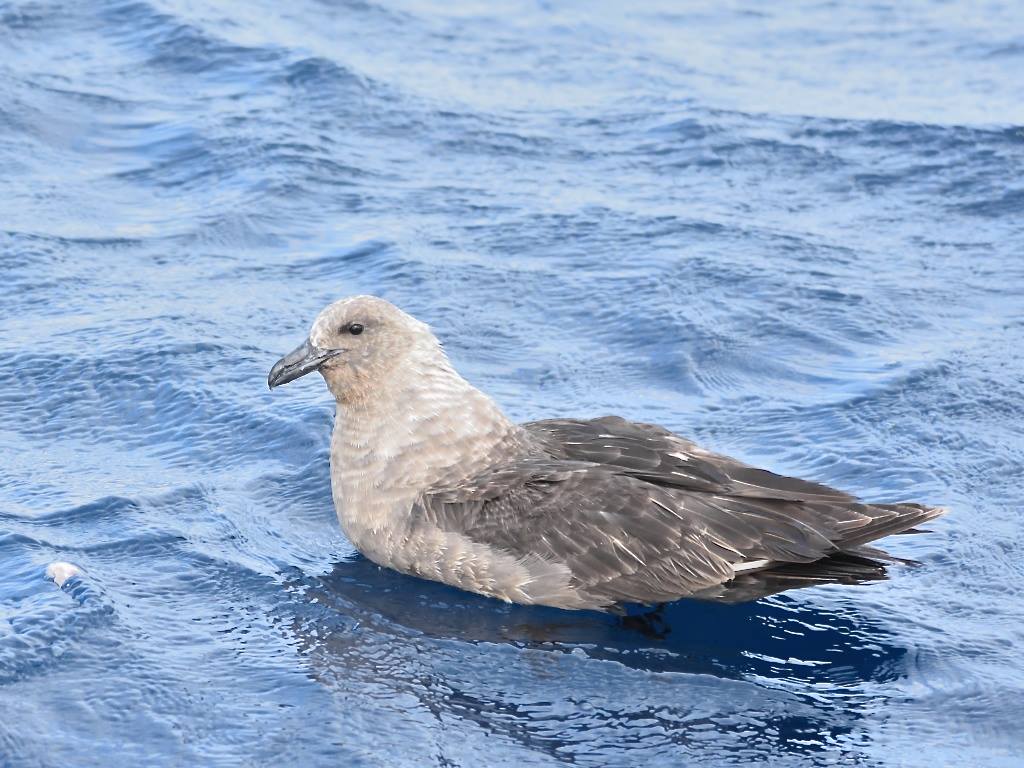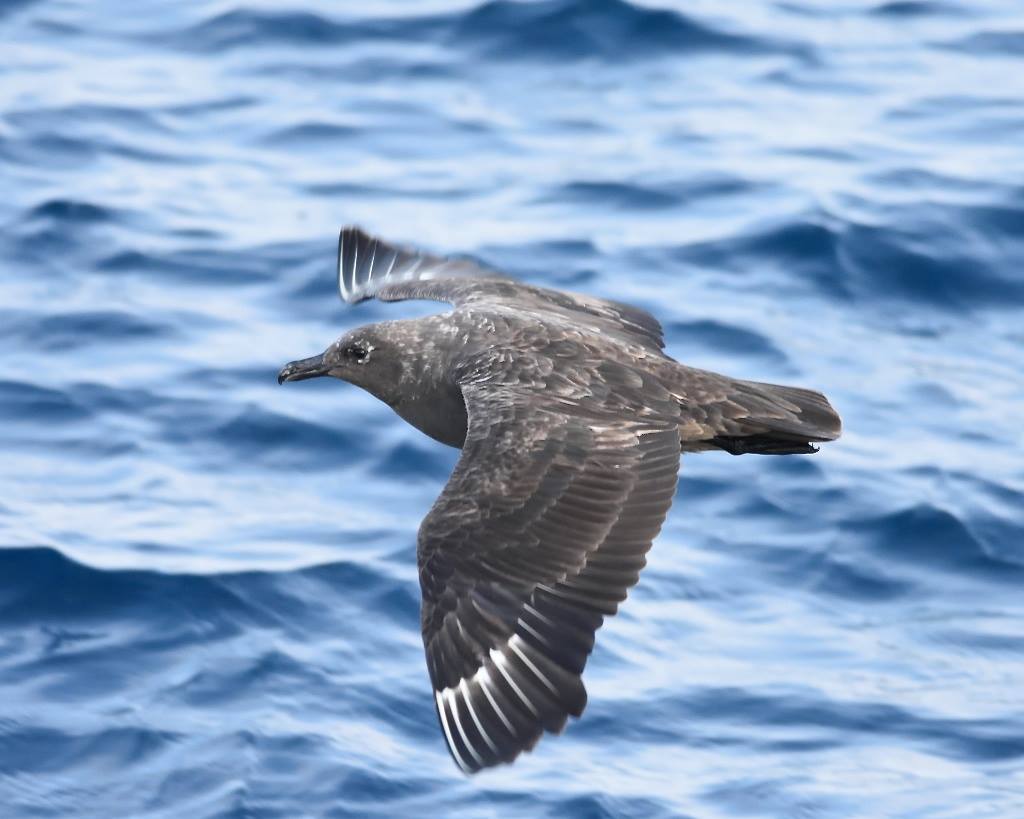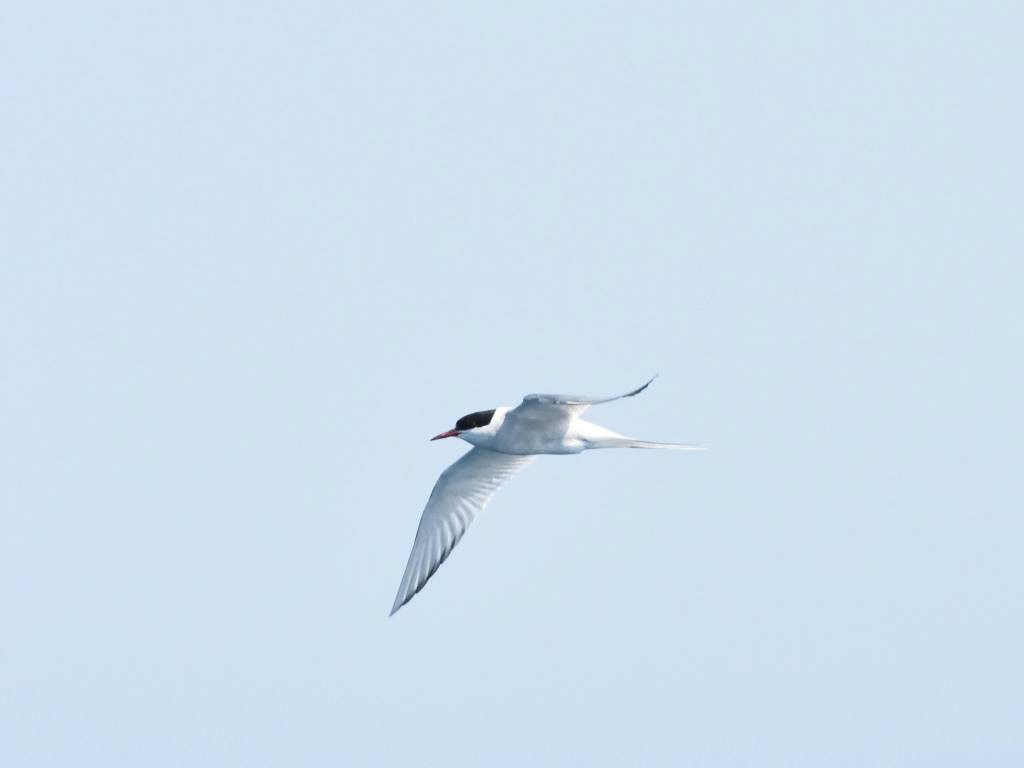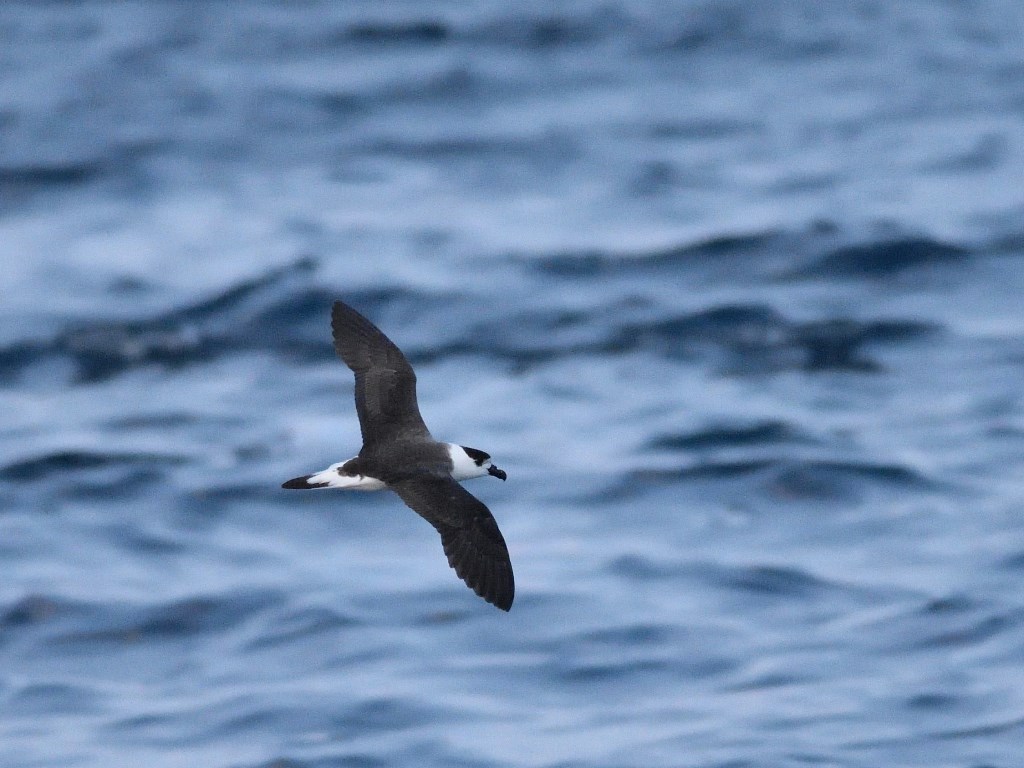Paulagics Birding 18Hr Pelagic Trip; Cape May, New Jersey
05/25/2015
Now that I’ve caught up on sleep a bit, here’s a more elaborate description of the successful Cape May overnight trip.
See Life Paulagics ran a highly successful overnight trip that racked up 4 NJBRC review species! (Yes, Mr. Boyle, I will be writing them up.) We left Sunday night a little after 10:00 and worked out way out to the deep 1,000 fathom (6,000′) waters off the edge of the Continental Shelf, beyond the canyon areas that were always the primary target of earlier pelagics.
Mike Fritz, a mainstay of our leader stable, had been studying the offshore water temperatures and found that while there was a large, warm (nearly 69 degree!) Gulf Stream eddy in the area, there was a cold water (about 57 degree) finger in our original target site outside of the Wilmington Canyon. This forced me to pick one of two choices; go south out of NJ pelagic waters, knowing that if we found something really good I would likely be tossed overboard by some of the more rabid state listers, or go north into the bosom of the accepted NJBRC pelagic zone and personal safety. We chose the latter and were not disappointed.
We stopped in the dark shortly after reaching warm, deep water. The nearly 12 degree change in temperature occurred in less than a mile and a half. These are conditions that we wanted. Chum started to fly and we waited for enough daylight to bird. Wilson’s Storm-Petrels began showing up quickly and in numbers, and we had some distant Leach’s as well. We bobbed around waiting for something else to show when Tom Johnson yelled “Black-capped Petrel!” While initially very distant, the bird came in and gave everybody a show. When accepted (and with the photos we’ve got it will be) it will be just the 5th accepted record for the state.
Another highlight for the day were two separate South Polar Skuas, one dark morph and one light morph. While they were seen hours apart rather than together, the plumage differences were obvious even without reviewing the thousands of photos taken. Both came in incredibly close and we were able to motor up to them as they sat and hoovered up chunks of beef suet from our chum slick. At one point we were close enough to the light bird that you could have thrown something at it. With 420mm of lens, there were times I could not fit the entire bird into my camera’s frame. What a show!
Yet another big highlight for many was finding a flock of 5 very cooperative Arctic Terns initially sitting on the water. As they got up we simply moved along with them, allowing everybody to tick off their field marks and watch them dip and feed for several minutes. These are not always the most cooperative of birds, so it was nice to have them behave.
On the marine mammal front, we had excellent looks at Cuvier’s Beaked Whales and Pilot Whales. Pretty much all beaked whale species used to be considered to be incredibly rare but as we venture far offshore more often, we’re finding Cuvier’s to be almost regular in the Mid-Atlantic.
Here are the final results of Monday’s trip out of Cape May.
Common Loon – 3
Black-capped Petrel – 1
Cory’s Shearwater – 11
Great Shearwater – 1
Sooty Shearwater – 21
Audubon’s Shearwater – 2
Wilson’s Storm-Petrel – 430
Leach’s Storm-Petrel – 12
Double-crested Cormorant – 1
Red Phalarope – 1
South Polar Skua – 2
jaeger sp. – 1
Great Black-backed Gull – 4
Common Tern – 4
Arctic Tern – 5
sterna sp. – 7
Loggerhead Turtle – 2
Risso’s Dolphin – 10
Offshore Bottlenose – 10
Humpback Whale – 1
Cuvier’s Beaked Whale – 7
Pilot Whale sp. – 6
Ocean Sunfish – 5
-Paul Guris, Leader at See Life Paulagics Birding Tour Company




